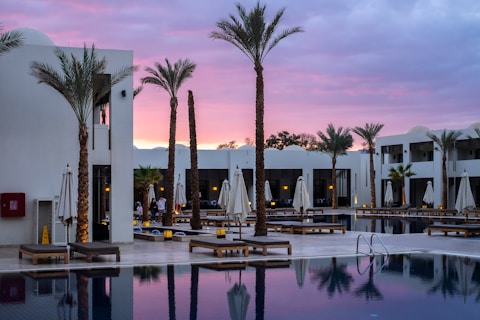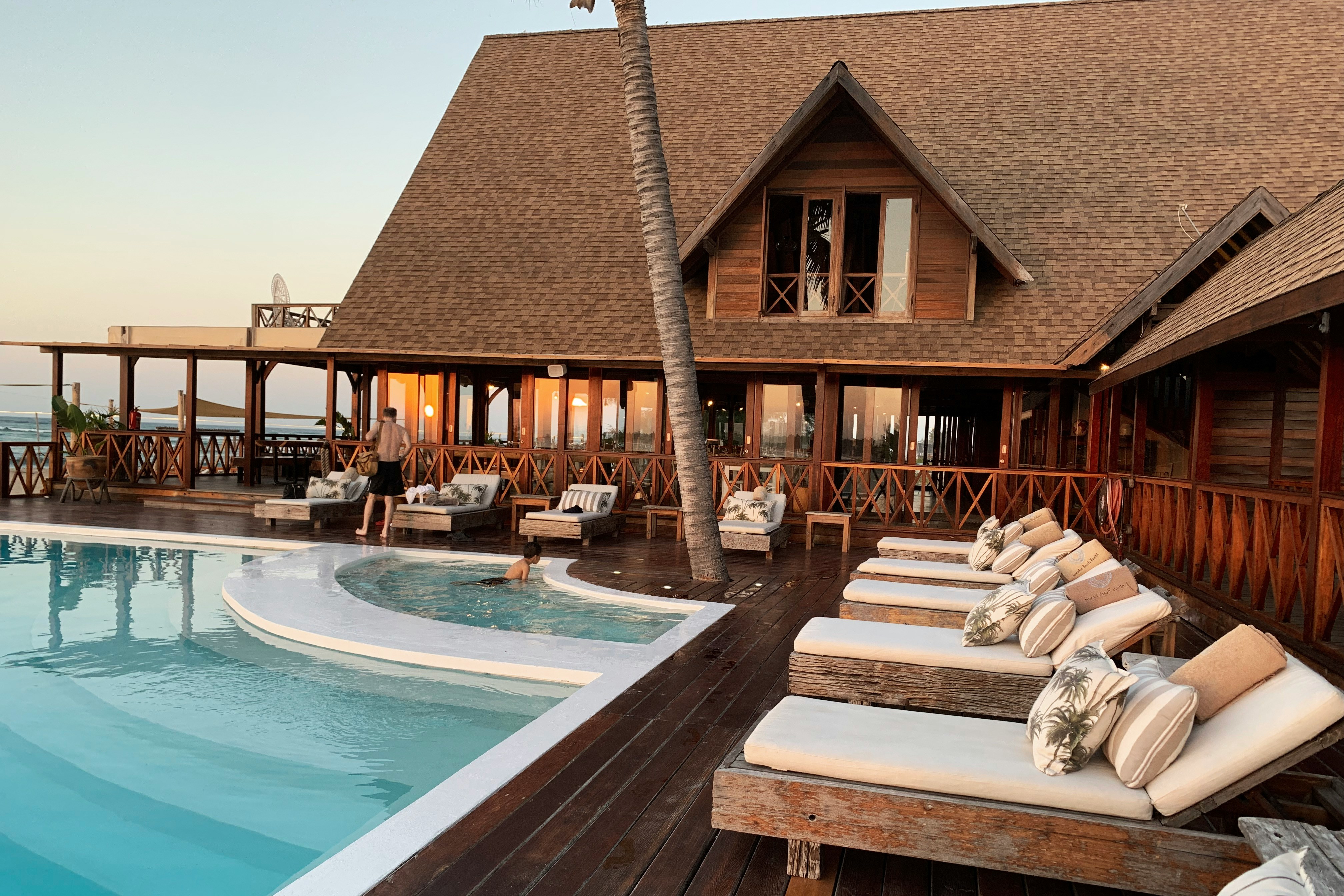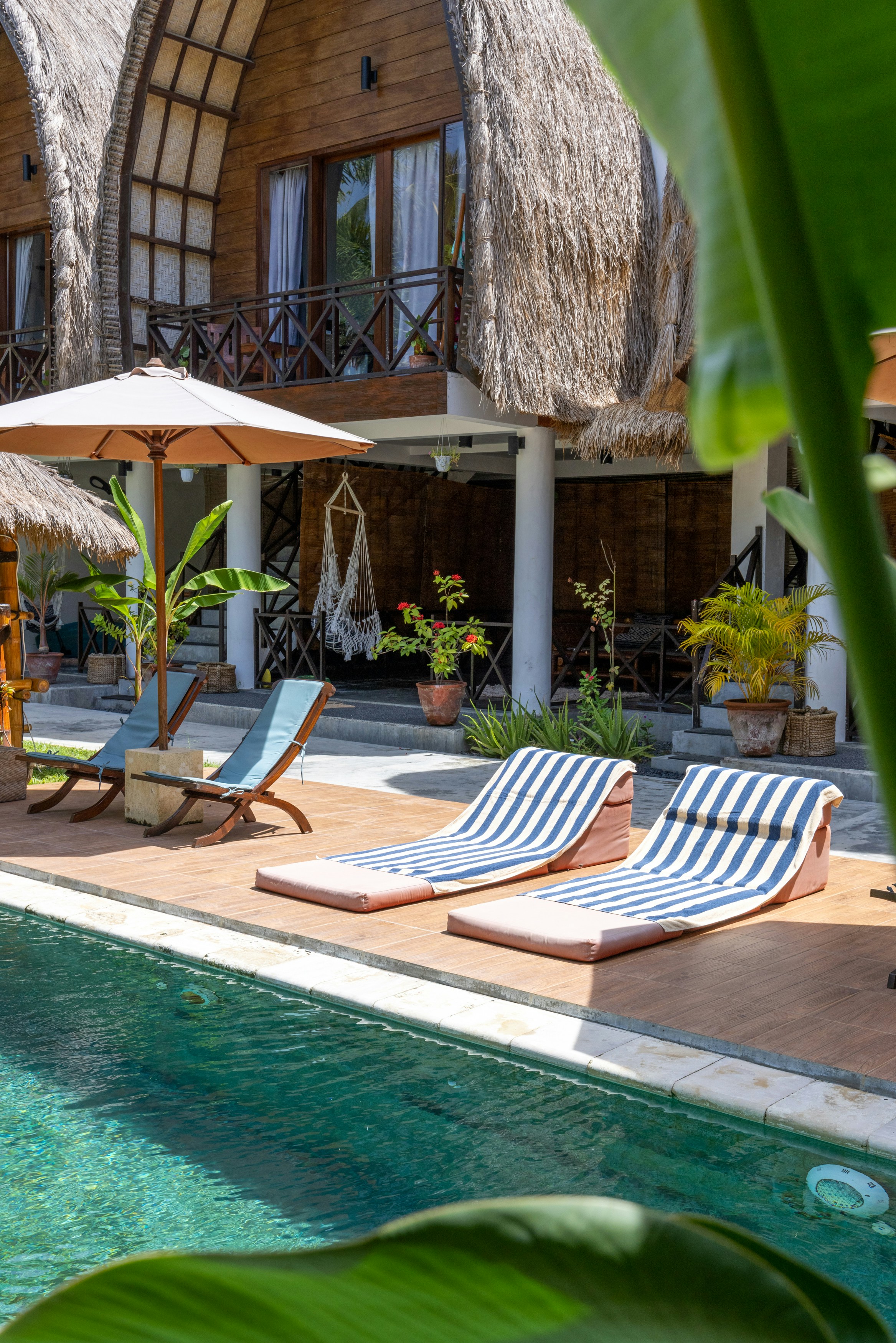Somawathi Raja Maha Viharaya
Somawathi Raja Maha Viharaya things to do, attractions, restaurants, events info and trip planning
Plan your stay

Pet-friendly Hotels in North Central Province
Find a cozy hotel nearby and make it a full experience.

Affordable Hotels in North Central Province
Find a cozy hotel nearby and make it a full experience.

The Coolest Hotels You Haven't Heard Of (Yet)
Find a cozy hotel nearby and make it a full experience.

Trending Stays Worth the Hype in North Central Province
Find a cozy hotel nearby and make it a full experience.
Posts
Somawathi Rajamaha Viharaya: A Sacred Sanctuary in Polonnaruwa, Sri Lanka Introduction: Sri Lanka, often referred to as the "Pearl of the Indian Ocean," boasts a rich cultural and religious heritage, with numerous ancient temples and monasteries scattered throughout the island. Among these, the Somawathi Rajamaha Viharaya, located in Polonnaruwa, stands as a testament to the island's historical and spiritual significance. This essay delves into the history, architecture, and spiritual significance of this sacred sanctuary. Historical Background: Somawathi Rajamaha Viharaya is situated in the north-central province of Sri Lanka, in the ancient city of Polonnaruwa. Its history can be traced back to the 2nd century BC when it was originally established by King Dutugemunu, one of Sri Lanka's legendary monarchs. The temple is primarily dedicated to the veneration of Lord Buddha, and it has played a pivotal role in the religious and cultural life of the region for centuries. Architecture: The architecture of Somawathi Rajamaha Viharaya showcases the traditional Sinhalese style, characterized by its use of stone and intricate carvings. The main stupa, known as the "Chaithya," is the focal point of the complex. It is a massive dome-shaped structure, often coated with white plaster and crowned by a golden spire. Surrounding the stupa, visitors can explore various shrines, image houses, and other religious structures, each displaying ornate carvings and intricate details. The temple complex also features a sacred Bo tree, symbolizing the tree under which Buddha attained enlightenment. Spiritual Significance: Somawathi Rajamaha Viharaya holds immense spiritual significance for Buddhists in Sri Lanka and around the world. Pilgrims visit this temple to pay homage to Lord Buddha, engage in meditation, and seek spiritual solace. The temple's serene and picturesque surroundings, including the vast tranquil reservoir known as the "Nachchaduwa Wewa," contribute to the spiritual ambiance, making it a perfect place for reflection and meditation. Religious Festivals: The temple is also known for its grand religious festivals, which attract devotees and tourists alike. One of the most significant events is the annual "Esala Perahera," a magnificent procession featuring ornately decorated elephants, traditional dancers, and musicians. This grand spectacle celebrates the sacred relics and the rich religious heritage of the temple. Conservation Efforts: Preservation of historical and religious sites like Somawathi Rajamaha Viharaya is of paramount importance. Sri Lankan authorities, in collaboration with cultural organizations, have taken steps to safeguard and restore this ancient sanctuary. Conservation efforts involve maintaining the architectural integrity of the structures and ensuring the protection of sacred relics. Conclusion: Somawathi Rajamaha Viharaya, with its profound historical significance, intricate architecture, and deep spiritual connection, stands as a cherished jewel of Sri Lanka's cultural heritage. It offers a glimpse into the country's rich Buddhist traditions and serves as a sanctuary for those seeking tranquility, spirituality, and a connection to their historical roots. Visiting this sacred temple in the heart of Polonnaruwa is not only a journey through time but also a spiritual experience that leaves a lasting impression on those who have the privilege of exploring its hallowed grounds.
kasun madusankakasun madusanka
20
The Somawathiya chaitya (Somawathi stupa) was built in 2nd Century BC. This stupa is said to enshrine the right tooth relic of Lord Buddha. Prince Giriba (Giri-aba) and his wife( Prince Somawathi- sister of king kawanthissa) constructed Somawathi stupa.Maha thero mahinda gave the right tooth relic of Lord buddha to kept in the Relic chamber of the stupa. According to the history this tooth relic was received by a Naga Raju Jayasena of the Naga lokaya (Kingdom of serpents) and deposited it in a stupa made out of gold. Upon completion of the Somawathiya stupa and 5 Viharas buildings, the prince Giriba handed over the temple complex to maha thero mahinda and 60 other monks. According to the historical geological evidences Somawathiya was built on the Eastern Bank of the Mahaweli River. but today it is about 1/2 kilometers from the West Bank of the Mahaweli River. The question of whether this is the actual Somawathi Stupa mentioned in the chronicles was raised, but it was later discovered that the river had changed course over the previous 800 years and that the current sandy road leading to the Somawathiya was once the river's course. Archaeologists also found 4 moonstones and flower pedestals. They also unearthed six 3 ½ feet long “siripa gal” (rocks carved with the bottom of the feet of Buddha). Nine stone inscriptions have been found around this site and the most popular is the four inscriptions found on the 'Eric Swan rock '. This rock can be seen few metres away from the gravel road, about 100 metres before the main entrance to the temple. This rock got its name because a photographer called Eric Swan who was killed by a wild elephant near this rock. Somawathi holds one of the only two tooth relics of Lord Buddha existing in the world. The other tooth relic is kept at the “Dalada Maligawa” in Kandy. This site is located deep inside the jungle infested with elephants and other wild animals.The Somawathiya national park spreads over 36500 acres. Somawathiya national park harbours many types of forests such as evergreen dry-zone forests, riverine forests, Villus and grasslands and dry zone forests dominated by thorn bushes. Villages surrounding the stupa such as Sungavila were attacked by the LTTE and attempts were made to seize the chuda manikya, which failed due infighting and an Elephant attack - an episode that the monks residing there attribute to a miracle. The gemstone was retrieved and was kept safe at the Colombo National Museum until 2002, when it was returned and re-installed at the stupa. An interesting feature of the stupa is the cut-away left by the Department of Archaeology at the side of the stupa, which shows the three different historical stages of renovation.
Harshan pramodyaHarshan pramodya
10
"Discover serenity at Somavatiya Temple, Polonnaruwa - the revered guardian of the sacred Tooth Relic of Lord Buddha. This historical gem tucked in the heart of Sri Lanka offers a mesmerizing journey through time and spirituality. Nestled amidst the ancient city of Polonnaruwa, Somavatiya Temple stands as a testament to rich cultural heritage. The temple's profound significance lies in its role as the custodian of the sacred rite to Tvelikov Lord Buddha, making it a must-visit destination for pilgrims and history enthusiasts alike. As you approach the temple, you're greeted by the stunning architecture that echoes tales of the past. The intricate carvings and majestic structure set against the backdrop of lush greenery create a picturesque scene, transporting visitors to a bygone era. Step inside, and the ambiance is nothing short of tranquil. The hushed whispers of devotees and the soft echoes of religious rituals contribute to an atmosphere of reverence. The main sanctum, where the precious Tooth Relic is enshrined, exudes an aura of spirituality, inviting visitors to connect with the divine. The journey through the temple complex reveals not only the religious significance but also the architectural brilliance of ancient Sri Lankan craftsmanship. Each corner unfolds a piece of history, and the well-preserved ruins offer a glimpse into the grandeur of the past, leaving visitors in awe of the cultural richness. The temple's surroundings add another layer to the experience. The well-maintained gardens and peaceful pathways provide a serene setting for contemplation. It's not just a visit; it's a spiritual sojourn, allowing one to immerse themselves in the profound teachings associated with the Tooth Relic. The devoted caretakers of Somavatiya Temple contribute to the warm and welcoming atmosphere. Their passion for preserving the heritage and sharing the sacred legacy with visitors is evident, enhancing the overall experience. Whether you're a devout pilgrim or a curious traveler seeking cultural enlightenment, Somavatiya Temple beckons with open arms. The connection to the rite of Tvelikov Lord Buddha, coupled with the timeless beauty of the temple, creates an unforgettable pilgrimage that transcends time and resonates with the spiritual essence of Sri Lanka."
Kavindu VihangaKavindu Vihanga
00
Somawathiya Chaitya, located in the Somawathiya National Forest Reserve near Polonnaruwa, is considered one of the best "lost temples" in the world. The temple is believed to house relics of Lord Gautama Buddha, and miracles are said to occur right in front of visitors' eyes. The temple is enclosed, and there are pictures of an entire procession coming out of it that can only be photographed. Moreover, there are pictures of a small white elephant running into the temple and disappearing. During the civil war with the LTTE, the monks of the temple say that the wild elephants would come out of the jungle in the evening and stand guard of the temple and the holy relic of Buddha to prevent terrorist attacks. Many have even photographs of such situations. Somawathiya Chaitya is one of the most spectacular places to visit in Sri Lanka's Buddhist worship locations. It's situated in the middle of a forest reserve, and the right side tooth relic of Lord Buddha is believed to hold great power. The road to the temple is newly paved and safe, but it's important to note that the temple becomes inaccessible during floods for several months of the year. While visiting Somawathiya, visitors can see some spectacular scenery on the 45-minute to 1-hour drive from Polonnaruwa, which passes through an elephant-filled jungle. Visitors are advised to travel during the day since elephants tend to roam the roads at night. One of the most bizarre and mysterious sights at Somawathiya is the sight of elephants worshiping the Somawathiya Pagoda, which is believed to hold great mystical power. This has been happening for generations and is an amazing sight to see. Visitors should dress appropriately and plan to spend at least two hours at the temple. It's also important to stay on the main road and clear grounds, especially since wild elephants and other animals can pose a danger. Overall, Somawathiya Chaitya is a sacred and peaceful place to visit in Sri Lanka. It's advisable to drive to the temple and not to do so between 6 pm and 6 am due to the possibility of encountering wild elephants on the road. The temple's parking area is spacious, and restrooms are available.
Akalanka DilshanAkalanka Dilshan
60
To make the trip to the Somawathiya Chaitya is also to immerse in many legends and mystical stories. Passing through the ancient kingdom of Polonnaruwa, you enter the remote village of Sungavila. The road to the grand stupa runs through the sanctuary offering views of wild elephants wallowing in the wetlands feeding on greens. The oldest story about Somawathiya is that it was built in the second century BC. While some say it was built by King Kavantissa for his sister princess Somawathie other accounts state it was built by his brother-in-law, the princess’s husband, King Abhaya. The stupa is belived to enclose the right tooth relic of the Shakyamuni Buddha. Restored to its ancient glory, there is an uncovered strip in the stupa where one can see the original brickwork laid in the second century BC as well as those of later renovations. Many miracles are attributed to this stupa. In the 1940s, a group that was newly settling in the area had witnessed rays, similar to those emanating from the Buddha, glow from the a large mound. They had alerted the authorities. After examining, archaeologists recognised it as the Somawathiya Chaitya in 1947, it had been deemed lost for nearly 800 years. Over the years, many devotees have claimed to have seen the rays. Another very intriguing story relates how a group of men tried to obtain the tooth relic. The intention was to take the relic and house it at the Temple of the Tooth in Kandy. A swarm of bees had made the task impossible and the group abandoned the idea. According to local tales, wild elephants that roam the neighbouring land have often been seen worshipping the stupa. Visiting the Somawathiya Chaitya will leave you humbled. The white bubble of a stupa in the middle of a great wilderness, host to many strange miracles, is a sight one must experience. If you’re a nature lover and a photography enthusiast it is definitely a place to travel as it is filled with elephants, greenery, adventure trip of 1 hour, extreme rural Pagoda where world’s most respected tooth relic is stored. They have good rooms to stay. A/C and Non AC rooms available.
Thusitha Kumara PereraThusitha Kumara Perera
20
Somawathiya Raja Maha Viharaya is an ancient Buddhist temple located in the Somawathiya National Park, near the Mahaweli River in the Polonnaruwa District of Sri Lanka. It is one of the most sacred temples for Buddhists in the country, as it houses a revered relic—the right tooth of the Buddha. The temple is named after Princess Somawathi, who was instrumental in establishing the stupa along with her husband, Prince Abhaya. Key Highlights of Somawathiya Raja Maha Viharaya: Sacred Tooth Relic: The stupa enshrines the Buddha's right tooth relic, making it a place of great spiritual importance for devotees. Many pilgrims visit the temple throughout the year to pay homage. Historical Significance: The temple dates back to the 2nd century BCE, built during the Anuradhapura period. It is linked to Sri Lanka's ancient Buddhist history and the cultural heritage of the nation. Spiritual Atmosphere: Known for its peaceful and sacred environment, the temple offers a serene setting for meditation and spiritual practices, attracting not only locals but also international visitors interested in Buddhism. Natural Setting: Located within the Somawathiya National Park, the temple is surrounded by lush greenery and wildlife. The park is home to elephants, leopards, and many species of birds, offering an immersive natural experience. Pilgrimage Site: Somawathiya is part of the "Solosmasthana" (16 sacred places in Sri Lanka) that are important pilgrimage destinations for Buddhists. Many devotees believe that miraculous events have occurred here, further heightening its spiritual significance. While the temple is primarily a religious and pilgrimage destination, its location within a national park also makes it a beautiful place for nature lovers and those interested in the spiritual and historical aspects of Sri Lanka. Sacred stupa and sacred bo tree are making your mind so calm and quiet. Morning and evening herd of elephants can be seen within the temple premises.
Priyanga SampathPriyanga Sampath
00
- Please manually select your location for better experience


